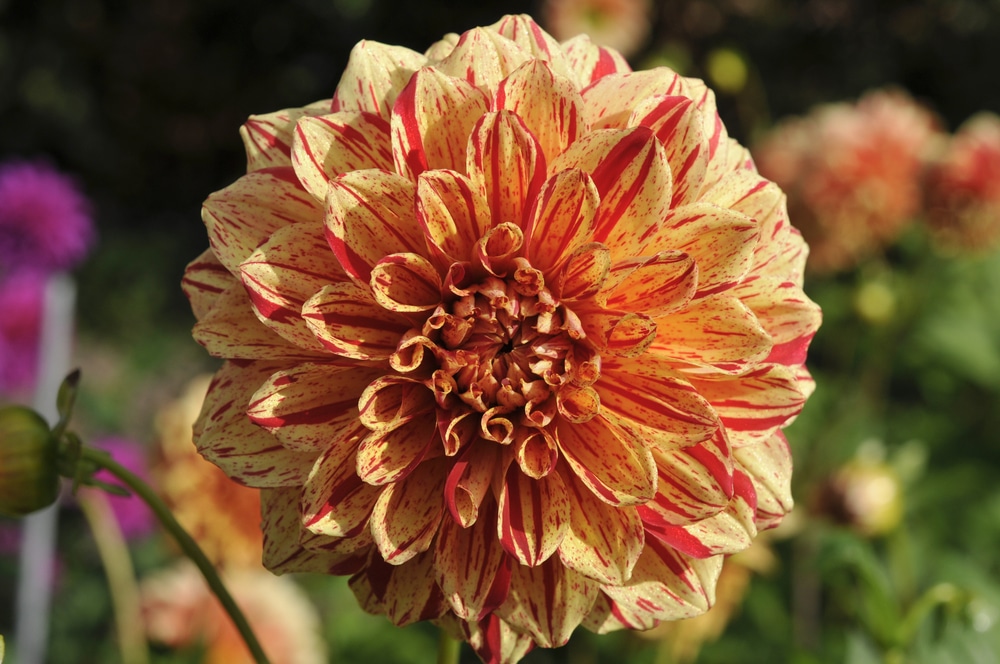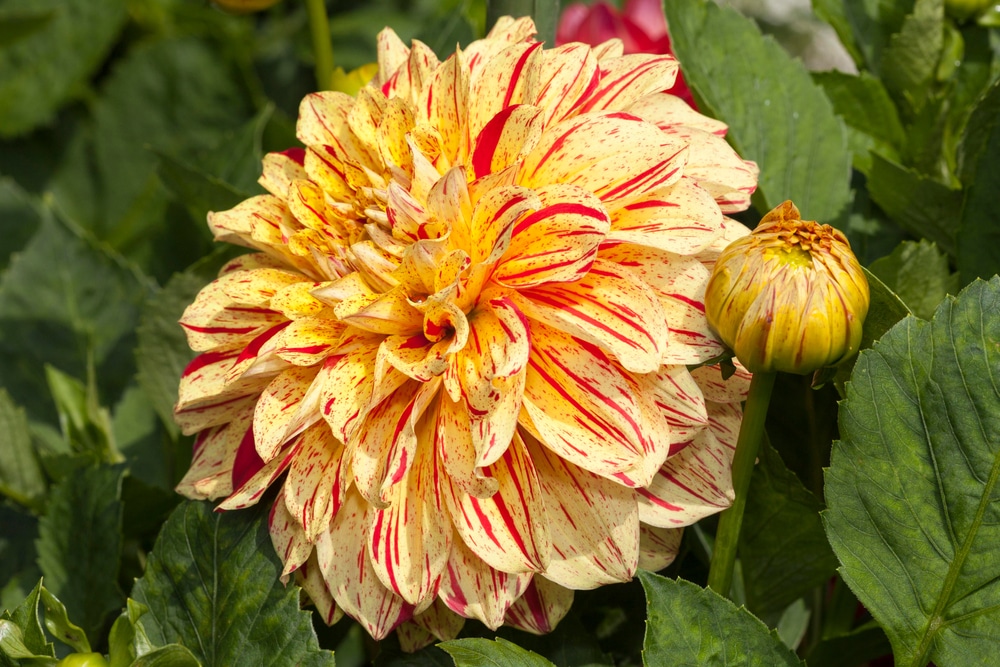The Dahlia was declared the national flower of Mexico due to its prevalence in the country in 1963. It is now a popular perennial often found in home gardens.
The Gloriosa Dahlia is a gorgeous and dramatic variant of the classic Dahlia. Read on to learn more about this popular garden flower.

| Botanical Name | Dahlia Pinnata |
| Common Name | Gloriosa Dahlia |
| Plant Type | Perennial |
| Flower Color | Yellow and red, variegated |
| Size When Mature | 48 to 52 inches |
| Bloom Time | Mid-Summer |
| USDA Hardiness Zones | 8-10 |
| Sun Requirements | Full/Partial Sun |
| Soil PH Range | 5.8 to 6.2 |
| Soil Type | Loamy, well-draining |
| Water Needs | High |
| Native Area | Central America |
What You Need To Know About Gloriosa Dahlia
The Gloriosa Dahlia is a red and yellow variegated variant of the perennial Dahlia. The flower has tuberous roots and thrives as a perennial in tropical climates and as an annual in temperate climates.
The Gloriosa Dahlia has no distinct scent, and the flower is toxic to dogs and cats. Dahlias are late-blooming flowers as flowers bloom in mid-summer. Flowers can reach a spread of 24 inches. These flowers grow from tubers rather than seeds. Contrary to popular belief, Gloriosa Dahlias are relatively easy to grow.
How To Care for Gloriosa Dahlia
Here are the key aspects to remember when caring for Gloriosa Dahlia.
Light
The Gloriosa Dahlia requires full sunlight and is unsuitable for indoor conditions. Direct, full sunlight in an outdoor setting is ideal.
Water and Soil Needs
The Gloriosa Dahlia thrives in moist but well-drained conditions, as standing water may cause issues. Rich soil is best for this flower, and many dahlia-specific soils are available on the market.
Temperature Requirements
The Gloriosa Dahlia grows best in temperate to tropical climates and may suffer in cold climates. The flower is native to Central America, so a warm and moist climate is closest to its natural habitat.
This flower tolerates temperatures between 60 and 72 degrees Fahrenheit (between 15 and 22 Celsius). Temperatures below 15 degrees Fahrenheit will freeze and destroy the flower’s roots, so many gardeners who live in cold climates bring their flowers inside during the winter.
Fertilizer
Ideal fertilizer conditions for Gloriosa Dahlia is a fertilizer high in potassium and phosphorous, but low in nitrogen. High nitrogen content may cause the flower to have few or no blooms throughout the season.
Follow the instructions on your brand of fertilizer to ensure you don’t overfertilize the flowers.
Common Diseases
Dahlias, including the Gloriosa Dahlia, are susceptible to many common diseases, including powdery mildew, botrytis blight, wilt, stem rot, and viral diseases. Ensuring the flower’s foliage stays relatively dry can help prevent many common diseases.
It’s important to note that overwatering is the primary cause of many common diseases that affect Gloriosa Dahlias. These plants can also be affected by insect pests, which will eat the leaves.
Gloriosa Dahlia Propagation
The best propagation method for Gloriosa Dahlia is division and planting cuttings of existing plants with new growth shoots. Gloriosa Dahlias cannot grow from seeds, all Dahlias are grown from tubers. The easiest method is cutting a new growth off an existing plant and either pre-sprouting it or planting it directly.
